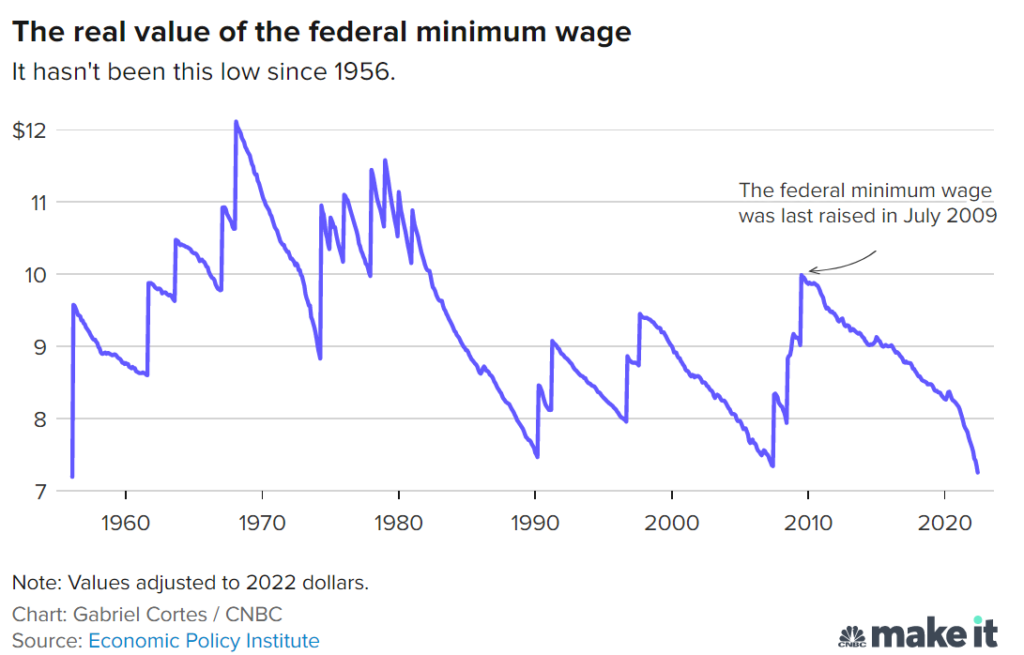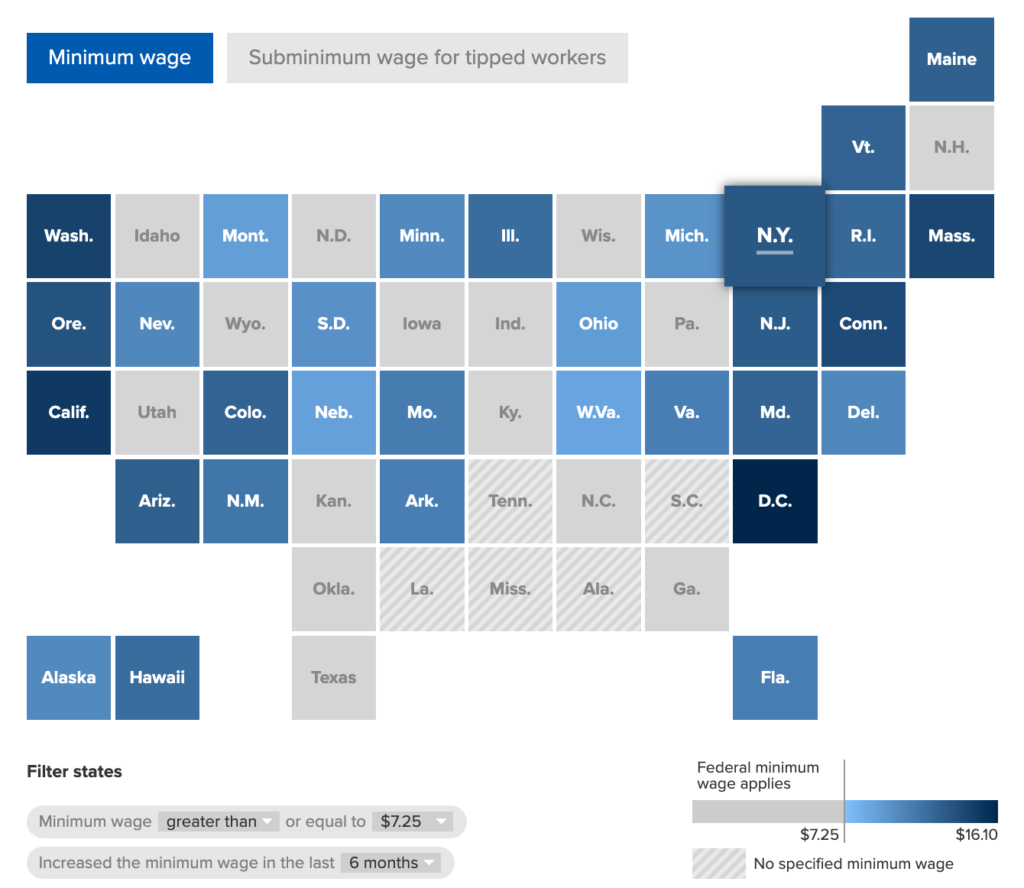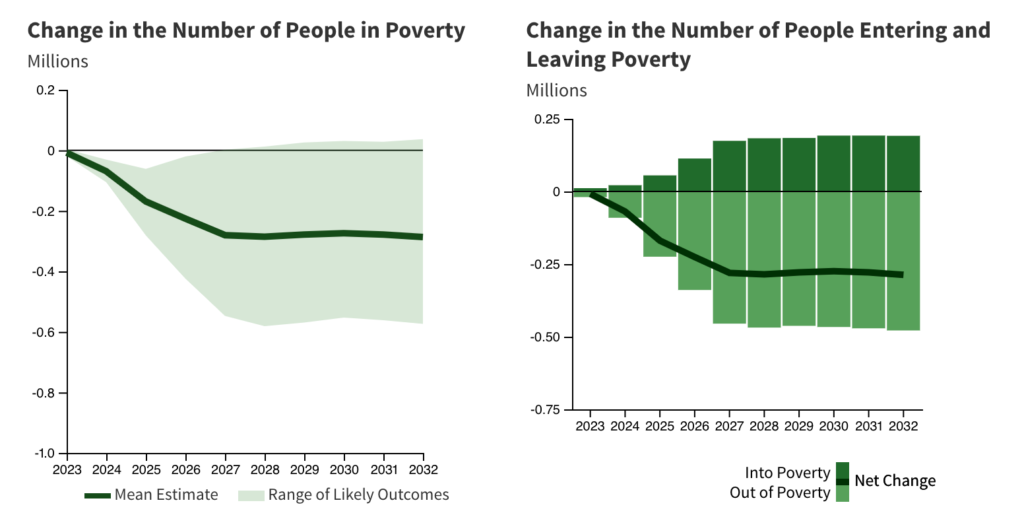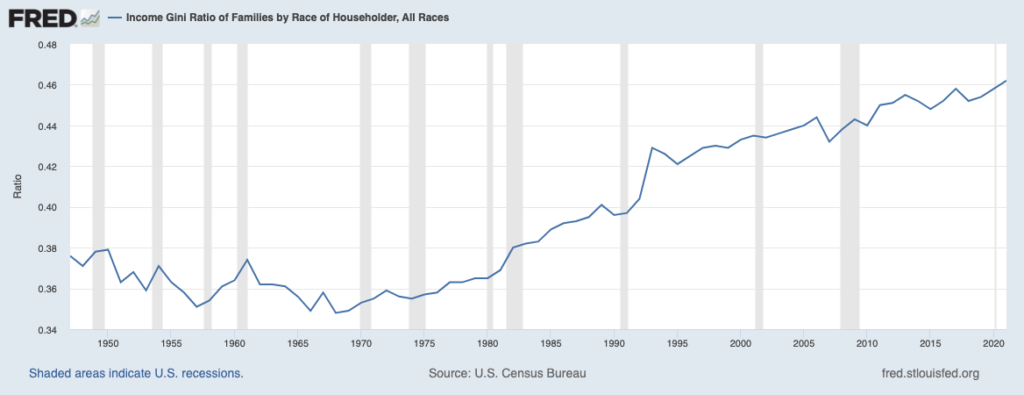A common question many people have is whether raising the federal minimum wage will help reduce poverty. One may think that since raising the minimum wage would lead to minimum wage workers earning more money, it would help alleviate poverty. The reality, however, is much more complicated. Although we have often called upon raising the minimum wage as a solution to poverty, we must recognize the unfavorable effects that inflation has on the value of said minimum wages and understand what groups of people earn minimum wages.
The Inflation-Poverty Relationship
Inflation has been increasing drastically in the United States for the past few years. It has been especially severe with essential products such as food and housing (and gas). The price of eggs has increased by 39.8% since last year and meats now cost anywhere between 6.7% to 16.6% more. The price of fruits and vegetables also increased by 9.4%. Housing expenses have seen similar increases, rising by 13.9% from July 2021 to July 2022.
This sort of inflation harms low-income households and those in poverty more severely compared to wealthier households. Low-income households have little to no financial buffers. They have to spend a greater share of their already stretched budget on food, energy, and housing, the spending categories hardest hit by inflation. Wealthier households, on the other hand, can easily dip into savings or cut back on non-essentials such as eating out or traveling.
One ‘easy’ solution to help low-earning families in such an inflationary economy could be to put more money in their pockets by increasing their wages. To do that, the government can increase the legally mandated federal minimum wage which currently stands at $7.25 per hour. However, no such changes have been made since 2009. Additionally, a study conducted by the Economic Policy Institute, a non-partisan think tank, shows that after considering inflation, the value of the federal minimum wage is at its lowest point in 66 years. Considering that inflation has no sign of slowing, the value of minimum wages is bound to diminish further.

In the absence of federal laws that keep up with current economics, 30 states and D.C. have adopted a minimum wage higher than the federal minimum wage. In 19 of these states and D.C., the minimum wage is indexed for inflation and automatically adjusted each year for price increases. On the contrary, there are 7 states that don’t have any minimum wage laws or have a minimum below the federal minimum wage.

In short, the federal minimum wage, which is a flat rate of $7.25, and most state minimum wage laws do not account for inflation. This means that unless Congress or state legislators take immediate action to raise the minimum wage in accordance with the current rate of inflation, it is unlikely that the poor will see relief from inflation by way of increasing the federal minimum wage.
Does raising the minimum wage help or not then?
The answer to this is still unclear for many reasons.
First, although minimum wage should be afforded to all workers in principle, in reality, most workers already earn more than the minimum wage. According to the Bureau of Labor Statistics, in 2020 only 1.1 million workers, or 1.5 percent of hourly-paid workers earned wages that were at or below the federal minimum. In comparison, back in 1979, a whopping 13.4% of workers earning at or below the federal minimum wage. This significant decline implies that only a small minority of the population would be impacted by an increase in the federal minimum wage.
Second, minimum wage workers are not necessarily always in poverty. According to data from the Bureau of Labor Statistics Current Population Survey, the median family income of those earning the minimum wage in 2017 was $49,500. When you note that the poverty level of income for a family of 4 was $24,600 at the time, it is clear that a lot of minimum-wage workers aren’t in poverty at all. Additionally, the data accounted for in the two measures differs greatly. The poverty measures look at a family’s pretax income and include in calculations peoples’ age and family composition, such as how many people including children there are in the family. The minimum wage measures, on the other hand, consider only one worker’s wages and do not concern how many people rely on the wages of that worker. For example, a teenager or retiree could earn some extra cash for an already affluent family by working at a minimum-wage job. In contrast, a primary breadwinner might barely be able to earn enough to feed a family of four. In short, people in poverty do not necessarily correspond with people who earn the federal minimum wage.
Third, an increase in the minimum wage may increase wages for some, but it could also create job losses for some workers who are employed at workplaces that cannot afford to increase wages. For these workers, a minimum wage increase could push them into poverty. According to the Congressional Budget Office, increasing the federal minimum wage would push about 19,000 people into poverty and pull 48,000 out of poverty, resulting in an overall change of bringing 29,000 people out of poverty. Some economists have even challenged the CBO assumptions on the job forecast– arguing that recent studies showed that increases in the minimum wage had produced little or no effect on employment. In the end, the effects of a minimum wage increase on job losses seem particularly contentious as economists have yet to come to an agreement even after decades of experience and economic research.

Beyond Political Rhetorics, What is the Goal of Minimum Wage?
Going back to the primary purposes of minimum wage, at first glance it may appear that minimum wage is targeted primarily at putting more money in the pockets of low-wage workers, thus alleviating poverty. Some do in fact argue that the primary purpose of the minimum wage provisions of the Fair Labor Standards Act first passed in 1938 was to help the lowest-paid Americans who lacked bargaining power to negotiate the bare minimum for subsistence.
Recent presidents have certainly invoked the poverty argument when proposing increasing the minimum wage. In 2013, President Obama said in a State of the Union Address.
“A family with two kids that earns the minimum wage still lives below the poverty line. That’s wrong…Tonight, let’s declare that in the wealthiest nation on Earth, no one who works full time should have to live in poverty.”
Seven years later, in 2021, President Biden echoed Obama when promoting the American Rescue Plan which was a package of policies that include a federal minimum wage increase.
“No one in America should work 40 hours a week making below the poverty line. Fifteen dollars gets people above the poverty line. We have so many millions of people working 40 hours a week — working — and some with two jobs, and they’re still below the poverty line.”
But in reality, poverty alleviation may not be the primary goal of minimum wage. In fact, the Fair Labor Standards Act was intended to stabilize the post-depression economy and protect the workers in the labor force. In other words, minimum wage not just protects the poor, but also serves a wider purpose of creating a well-functioning economy.
The minimum wage also promotes economic fairness and acts as one way to decrease the wealth gap. In this case, the focus is on women, minorities, migrant workers, or people of color as these groups are often in low-wage jobs and thus major beneficiaries of minimum wage laws.
We have seen a huge rise in income inequality as represented by the Gini coefficient. Recent studies show that minimum wage transfers wealth from workers at the top of the income distribution to workers at the bottom. Thus, the minimum wage seems more relevant as a tool to fix the income gap rather than a tool to fix poverty.

Broadening the Reason
While the data is complicated and many aspects are still heavily debated, some things remain clear. Only a meager 1.5% of the total workforce earns the federal minimum wage in the first place. Additionally, less than 50% of families with a minimum wage worker are in poverty. Lastly, there are concerns that raising the federal minimum wage could decrease job opportunities as some smaller companies won’t be able to afford the extra expenses. Taking this into account, focusing on minimum wage as a cure-all for poverty is a decision with very little merit.
Although raising the federal minimum wage has little merit in relation to poverty relief, it is worth considering purposes elsewhere. An initial purpose of the minimum wage when it was first implemented was to stabilize the post-depression economy and protect the workers in the labor force. Another lesser-known intent was to decrease the wealth gap and promote economic fairness, especially for women, minorities, and migrant workers, many of which often have low-paying jobs.
Perhaps it is time to change the political rhetoric and shift the focus on minimum wage. The minimum wage is not just for the poor. It is for fairness for all.
References
https://www.cnn.com/2022/09/13/business/grocery-prices-august
https://www.washingtonpost.com/business/2022/02/13/low-income-high-inflation-inequality/
https://www.washingtonpost.com/business/2022/02/13/low-income-high-inflation-inequality/
https://www.epi.org/blog/the-value-of-the-federal-minimum-wage-is-at-its-lowest-point-in-66-years/
https://www.nytimes.com/2021/02/26/us/politics/republicans-minimum-wage.html
https://www.nytimes.com/2021/03/05/us/minimum-wage-senate.html
https://www.bls.gov/opub/reports/minimum-wage/2020/home.htm
https://www.ilo.org/global/topics/wages/minimum-wages/beneficiaries/lang—en/index.htm
https://econofact.org/who-benefits-from-a-higher-minimum-wage
https://www.econlowdown.org/v3/public/would-increasing-the-minimum-wage-reduce-poverty
https://www.cbo.gov/publication/57049
https://www.nytimes.com/2021/02/08/us/politics/minimum-wage-cbo.html
https://www.americanprogress.org/article/raising-minimum-wage-transformative-women/https://equitablegrowth.org/why-minimum-wages-are-a-critical-tool-for-achieving-racial-justice-in-the-u-s-labor-market/
https://www.epi.org/blog/tight-link-minimum-wage-wage-inequality/
